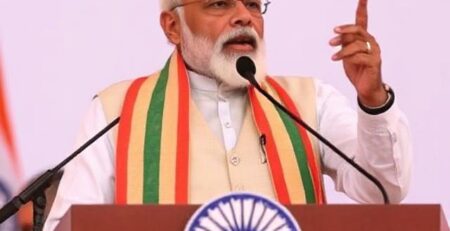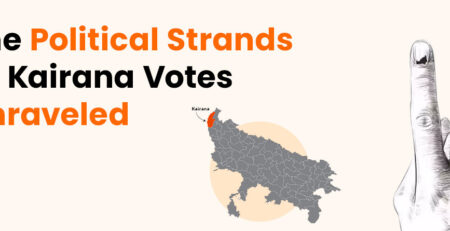Trump India Tariff Escalation: Russia Backs New Delhi Against “Illegal” US Trade Pressure
Introduction: A New Chapter in US-India Trade Relations
The global trade landscape has been dramatically reshaped by recent developments surrounding President Donald Trump’s announcement that he would be “substantially raising” the tariff on Indian exports to the US over the Asian nation’s purchases of Russian oil. This escalating trade dispute has drawn international attention, particularly from Russia, which has emerged as an unexpected defender of India’s sovereign trade rights.
The Trump India tariff controversy represents more than a bilateral trade disagreement—it embodies the complex intersection of geopolitics, energy security, and economic sovereignty in an increasingly multipolar world. As tensions mount, the implications extend far beyond US-India relations, potentially reshaping global trade dynamics and alliance structures.
Timeline of Escalating Trade Tensions
Initial Tariff Announcement
President Donald Trump announced Wednesday that India will pay a tariff of 25% beginning Aug. 1, in addition to a “penalty” for what he views as unfair trade policies and for India’s purchase of military equipment and energy from Russia. This initial announcement marked a significant departure from previous diplomatic approaches to trade disputes between the world’s largest democracies.
The timing of Trump’s announcement was particularly significant, coming amid ongoing negotiations between the two nations. President Donald Trump said he would impose a tariff of at least 25% on India’s exports to the US starting Friday, though later added that the two sides were still in talks. This suggests that the tariff threat was intended as a negotiating tactic rather than a final decision.
Justification for Tariff Measures
Trump’s rationale for the Trump India tariff focused on multiple grievances. Trump on Wednesday said he made the decision because India has tariffs that are “among the highest in the World, and they have the most strenuous and obnoxious non-monetary Trade Barriers of any Country.” He also blasted India’s purchases of Russian energy and weapons.
The dual nature of Trump’s complaints—both traditional trade barriers and geopolitical concerns about Russia—highlighted the complex motivations behind the tariff threat. President Donald Trump announced Wednesday that the U.S. would impose a 25% tariff on imports from India, slamming what he called the South Asian country’s “obnoxious” trade barriers and purchases of Russian military equipment and energy while the war in Ukraine stretches into a fourth year.
Escalation and Broader Implications
The situation escalated further when Trump expanded his threats beyond India. Earlier this month, Trump warned Russia to stop its war in Ukraine or else its trading partners would be hit with 100% “secondary tariffs.” That came as U.S. lawmakers have been working on a bill that would allow an even tougher punishment of up to 500% tariffs.
This broader approach to sanctioning Russia’s trading partners represented a significant expansion of US economic pressure tactics, potentially affecting multiple countries that maintain trade relationships with Moscow.
Russia’s Strong Response: Defending Sovereign Trade Rights
Kremlin’s Official Position
Russia’s response to the Trump India tariff threat was swift and unambiguous. “We hear many statements that are in fact threats, attempts to force countries to cut trade relations with Russia. We do not consider such statements to be legal,” Kremlin spokesman Dmitry Peskov told reporters. “We believe that sovereign countries should have and do have the right to choose their own trading partners, partners for trade and economic cooperation”.
This statement represented more than diplomatic protest—it articulated a fundamental principle of international law and economic sovereignty that resonates with many developing nations facing similar pressures.
Legal and Diplomatic Dimensions
Russia accused the US of exerting illegal trade pressure on India for its trade with Moscow, framing the dispute in terms of international law rather than mere bilateral disagreement. This legal characterization of US actions as “illegal” trade pressure elevated the dispute from economic policy to questions of international legal compliance.
The Russian position emphasizes the principle that sovereign countries have the right to choose their trade partners, a principle that has gained traction among nations seeking to maintain trade relationships despite geopolitical pressures.
India’s Response and Strategic Calculations
Official Indian Position
India’s response to the Trump India tariff threat was measured but firm. “In this background, the targeting of India is unjustified and unreasonable. Like any major economy, India will take all necessary measures to safeguard its national interests and economic security,” New Delhi said.
This response demonstrated India’s determination to maintain its strategic autonomy while engaging constructively with both the United States and Russia.
Strategic Balancing Act
India’s position reflects its commitment to strategic autonomy in foreign policy, a principle that has guided its approach to international relations since independence. The country has consistently maintained that its trade relationships should be based on mutual benefit rather than third-party pressure.
U.S. bilateral trade with Russia in 2024 stood at $5.2 billion, compared with nearly $36 billion in 2021, government data showed. The U.S. has not imposed any “reciprocal tariffs” on Russia. This data point highlighted what India perceived as hypocrisy in US policy—maintaining trade with Russia while pressuring India to reduce its own trade relationships.
Economic Impact and Trade Dynamics
Scale of India-Russia Trade
The economic stakes in this dispute are substantial. India has become one of Russia’s largest oil buyers, particularly after Western sanctions created opportunities for discounted Russian crude. This trade relationship has provided India with energy security benefits while offering Russia alternative markets for its exports.
The Trump India tariff threat specifically targeted these energy purchases, recognizing their strategic importance to both countries. The US position suggested that India’s purchases were not merely commercial transactions but contributions to Russia’s war effort in Ukraine.
Broader Economic Implications
The tariff escalation could have far-reaching economic consequences beyond bilateral trade. As one of the world’s fastest-growing major economies, India represents a crucial market for US exporters and a key destination for American investment.
The dispute also highlighted the changing dynamics of global energy markets, where traditional alliances and economic relationships are being reconfigured by geopolitical tensions and energy security concerns.
Geopolitical Context and Alliance Structures
US Strategy and Objectives
The Trump India tariff strategy appeared designed to achieve multiple objectives simultaneously: reducing the US trade deficit with India, pressuring India to align more closely with US policy toward Russia, and demonstrating American resolve in using economic tools to advance geopolitical goals.
However, this approach also risked alienating a key strategic partner in the Indo-Pacific region, where the US has been working to build coalitions to counter China’s growing influence.
Russia’s Strategic Response
Russia’s decision to publicly defend India represented a strategic calculation aimed at strengthening relationships with non-Western powers. By positioning itself as a defender of sovereign trade rights, Russia sought to appeal to countries facing similar pressures from Western powers.
This approach aligned with Russia’s broader strategy of building alternative international frameworks that emphasize sovereignty and non-interference in domestic affairs.
India’s Strategic Autonomy
India’s response reflected its longstanding commitment to strategic autonomy—the principle that the country should maintain independent decision-making capacity in foreign policy and economic relations. This principle has become increasingly important as global tensions have intensified and major powers have demanded clearer alignment from partners.
International Law and Trade Governance
Legal Framework for Trade Relations
The dispute raised important questions about the legal framework governing international trade relations. Russia’s characterization of US actions as “illegal” referenced principles of sovereignty and non-interference that are enshrined in international law.
The World Trade Organization and other international bodies have established norms and procedures for addressing trade disputes, but the politicization of trade relationships has complicated the application of these frameworks.
Precedent and Future Implications
The Trump India tariff approach could establish precedents for using trade policy as a tool of geopolitical pressure. This development could fundamentally alter the international trade system, potentially leading to more fragmented and politicized trade relationships.
The response from Russia and India suggested that such approaches might face significant resistance from countries committed to maintaining economic sovereignty and diversified trade relationships.
Energy Security and Global Markets
Russian Energy in Global Context
Russia’s position as a major energy exporter has made it a crucial supplier for many countries, including India. The country’s vast oil and gas reserves have provided it with significant geopolitical leverage, particularly with countries seeking to diversify their energy sources.
India’s purchases of Russian oil reflected practical energy security considerations rather than geopolitical alignment. As one of the world’s largest energy consumers, India has consistently prioritized access to affordable energy sources to support its economic development.
Market Dynamics and Price Implications
The threat of tariffs on countries purchasing Russian energy could have significant implications for global energy markets. Such measures might lead to price volatility and supply chain disruptions that could affect energy consumers worldwide.
The interconnected nature of global energy markets means that attempts to isolate Russian energy exports could have unintended consequences for global energy security and price stability.
Diplomatic Implications and Future Relations
US-India Relations
The Trump India tariff dispute represented a significant test of US-India relations, which have generally strengthened over recent decades. The two countries have developed extensive cooperation in areas ranging from defense and technology to education and cultural exchange.
However, the tariff threat highlighted fundamental differences in approach to international relations, with India emphasizing strategic autonomy while the US sought clearer alignment on Russia policy.
Russia-India Partnership
Russia’s defense of India in this dispute could strengthen the longstanding partnership between the two countries. India and Russia have maintained close relations since the Cold War era, with cooperation spanning defense, energy, space, and nuclear technology.
The current dispute provided Russia with an opportunity to demonstrate its value as a partner that respects India’s sovereignty and supports its right to independent decision-making.
Multilateral Implications
The dispute also had implications for multilateral institutions and partnerships. India’s participation in groups like BRICS (Brazil, Russia, India, China, South Africa) and the Shanghai Cooperation Organization could be strengthened by this demonstration of resistance to Western pressure.
Conversely, India’s relationships with Western-led institutions and partnerships might face new tensions as a result of this dispute.
Economic Sovereignty in a Multipolar World
Changing Global Dynamics
The Trump India tariff controversy reflected broader changes in the global economy, where traditional Western dominance is being challenged by emerging powers seeking greater autonomy in economic decision-making.
The dispute highlighted the tension between interdependence and sovereignty in the global economy, where countries must balance the benefits of international trade with the need to maintain independent decision-making capacity.
Alternative Economic Frameworks
Russia’s support for India’s position aligned with efforts to develop alternative economic frameworks that emphasize sovereignty and mutual respect rather than conditional partnerships based on geopolitical alignment.
These efforts include the development of alternative payment systems, trade agreements that bypass Western-dominated institutions, and partnerships based on mutual benefit rather than political conditionality.
Conclusion: Implications for Global Trade and Diplomacy
The Trump India tariff controversy and Russia’s response represent a significant moment in contemporary international relations. The dispute has highlighted fundamental questions about sovereignty, economic interdependence, and the use of trade policy as a tool of geopolitical pressure.
Russia’s characterization of US actions as “illegal” and its defense of sovereign trade rights has resonated with many countries facing similar pressures. The principle that sovereign countries should have the right to choose their trading partners has gained renewed importance in an era of increasing geopolitical polarization.
For India, the dispute has reinforced the importance of strategic autonomy and diversified partnerships. The country’s determination to maintain independent decision-making capacity while engaging constructively with multiple partners reflects a broader trend among emerging powers.
The long-term implications of this dispute will depend on how the various parties navigate the complex intersection of economic and geopolitical interests. The international community will be watching closely to see whether diplomatic solutions can be found that respect sovereignty while addressing legitimate concerns about international law and security.
As global trade relationships continue to evolve in response to geopolitical tensions, the principles at stake in the Trump India tariff dispute—sovereignty, economic autonomy, and the right to choose trading partners—will likely remain central to international discourse. The outcome of this controversy could establish important precedents for how similar disputes are resolved in an increasingly multipolar world.
The support Russia has shown for India’s position demonstrates the potential for new alignments based on shared principles of sovereignty and non-interference, even as traditional alliance structures face new pressures. Whether these developments lead to greater fragmentation or new forms of cooperation will be one of the defining questions of contemporary international relations.












